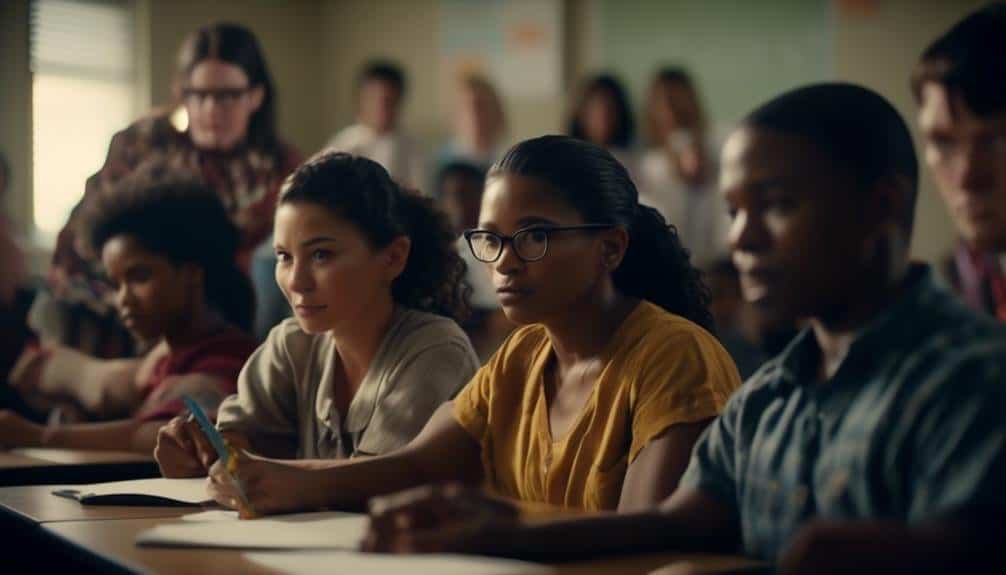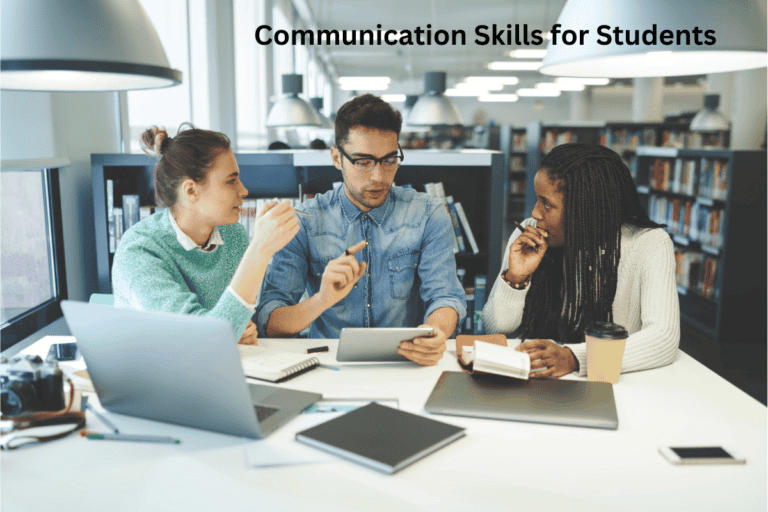Global Perspectives in Education for Teachers
Are you tired of being confined to the four walls of your classroom, yearning for a broader outlook on education that extends beyond the traditional norms? Well, it's time to break free from the shackles of the past and embrace the era of global perspectives in education.
In today's interconnected world, it is imperative for teachers to equip themselves with the knowledge and skills to navigate the diverse cultural landscapes they encounter in their classrooms. But where do you begin? How can you effectively engage your students and foster a sense of global citizenship?
Join us on this transformative journey as we explore the key elements of global perspectives in education and discover how you can become a catalyst for change in the lives of your students.
Key Takeaways
- Actively engage in learning about diverse cultural practices, beliefs, and perspectives
- Foster cultural sensitivity and promote global awareness in the classroom
- Incorporate multicultural literature into the curriculum to gain insights into different cultures
- Utilize technology for virtual exchanges and connect with students and educators from around the world
Understanding Global Cultures
To develop a comprehensive understanding of global cultures, you must actively engage in learning about diverse cultural practices, beliefs, and perspectives. This is essential for fostering cultural sensitivity and promoting global awareness in your classroom. Cultivating cultural sensitivity involves recognizing and appreciating the differences and similarities between your own culture and the cultures of your students. By understanding and respecting cultural practices and beliefs, you create an inclusive learning environment that values diversity.
To enhance your global awareness, it's important to explore various resources such as books, documentaries, and online platforms that provide insights into different cultures. Additionally, consider participating in professional development workshops or cultural exchange programs to gain firsthand experiences and knowledge. Engaging in conversations with colleagues from diverse backgrounds can also broaden your perspectives and deepen your understanding of global cultures.
Integrating global perspectives into your curriculum can be done through incorporating diverse literature, art, music, and history into your lessons. Encourage students to share their cultural experiences and perspectives, fostering a classroom environment that celebrates diversity. By actively seeking to understand global cultures, you not only enhance your teaching abilities, but also equip your students with the knowledge and skills necessary to thrive in an interconnected world.
Embracing Linguistic Diversity
As a teacher, it's essential to embrace linguistic diversity in your classroom.
Multilingual classrooms offer a unique opportunity for students to learn from one another and develop language skills in various languages.
Multilingual Classrooms
In multilingual classrooms, embracing linguistic diversity can enhance the educational experience for both students and teachers. Understanding language barriers is crucial in creating an inclusive and effective learning environment. By acknowledging and addressing these barriers, educators can implement strategies to support students in their language development.
Promoting bilingualism is another important aspect of multilingual classrooms. Encouraging students to maintain and develop their native language while also acquiring a new language can lead to cognitive benefits, increased cultural understanding, and improved academic performance. Teachers can leverage the diverse linguistic backgrounds of their students to create engaging and interactive lessons that foster language acquisition and cultural appreciation.
Cultivating Language Awareness
Teachers can foster language awareness and embrace linguistic diversity in multilingual classrooms, enhancing the educational experience for all students. By incorporating strategies that promote both language acquisition and cultural immersion, teachers can create an inclusive and enriching environment.
Here are two ways to cultivate language awareness:
- Multicultural literature: Introduce diverse books and stories that reflect the backgrounds and experiences of students. Encourage discussions about language variations and cultural perspectives portrayed in the texts, allowing students to appreciate the richness of different languages.
- Language exchange activities: Organize language exchange programs or buddy systems where students with different language backgrounds can interact and learn from each other. This promotes mutual understanding, empathy, and language development as students engage in authentic conversations.
Fostering Intercultural Communication
To foster effective intercultural communication, teachers must actively promote understanding and respect among students from diverse backgrounds. Building empathy is a crucial step towards creating an inclusive and harmonious classroom environment. Encouraging students to put themselves in others' shoes and view situations from different perspectives can help them develop a deeper understanding and appreciation for cultural differences.
Teachers can facilitate this by incorporating activities that encourage students to share their own experiences and listen to others' stories. By exploring cultural norms, teachers can help students recognize and appreciate the diverse ways in which people communicate, express themselves, and interpret the world around them. This can be done through discussions, videos, and interactive activities that expose students to different cultural practices and traditions.
It's important for teachers to create a safe space where students feel comfortable asking questions and engaging in respectful dialogue. By fostering intercultural communication, teachers can equip students with the skills and knowledge necessary to thrive in an increasingly interconnected global society.
Incorporating Multicultural Literature
Incorporating multicultural literature enhances students' understanding and appreciation of diverse cultures. By including literature from different cultures in the curriculum, teachers create an inclusive classroom that values and celebrates diversity. Here are two ways in which incorporating multicultural literature can provide diverse perspectives:
- Expanding Cultural Awareness:
Multicultural literature exposes students to different cultural experiences, traditions, and values. Through stories, students can immerse themselves in the lives of characters from various backgrounds, broadening their understanding of the world. They gain insights into the challenges and triumphs faced by individuals from different cultures, fostering empathy and promoting a sense of global citizenship.
- Challenging Stereotypes and Biases:
Multicultural literature challenges stereotypes and biases by presenting authentic and nuanced portrayals of diverse communities. By reading about characters who defy stereotypes, students learn to question assumptions and recognize the richness and complexity of different cultures. This helps them develop critical thinking skills and encourages them to challenge prejudice and discrimination in their own lives.
Incorporating multicultural literature not only enriches students' educational experience but also prepares them to navigate an increasingly diverse and interconnected world. It fosters a sense of respect, appreciation, and acceptance for all cultures, creating a more inclusive and harmonious society.
Promoting Global Citizenship
By exploring multicultural literature and cultivating a global perspective, teachers can empower students to become active global citizens. Promoting global citizenship is essential in today's interconnected world. It involves developing cultural competence and promoting global awareness among students. Through various educational strategies, teachers can foster a sense of global responsibility and empathy in their students.
One effective way to promote global citizenship is by incorporating multicultural literature into the curriculum. This allows students to gain insights into different cultures, traditions, and perspectives. It helps them develop a broader understanding of the world and fosters respect for diversity.
Another approach is to encourage students to engage in service-learning projects with a global focus. This could involve collaborating with international organizations or participating in community initiatives that address global issues such as poverty, climate change, or human rights. By actively participating in these projects, students learn the importance of taking action and making a positive impact on a global scale.
Furthermore, teachers can organize virtual exchanges or pen-pal programs with students from different countries. This allows students to interact with their peers from diverse backgrounds, fostering cross-cultural understanding and promoting global connections.
In summary, promoting global citizenship requires teachers to expose students to multicultural literature, encourage participation in service-learning projects, and facilitate cross-cultural interactions. By doing so, teachers can empower students to become active global citizens who are knowledgeable, empathetic, and committed to making a difference in the world.
| Strategies for Promoting Global Citizenship | |||
|---|---|---|---|
| Incorporate multicultural literature into the curriculum | Encourage participation in service-learning projects | Facilitate cross-cultural interactions | |
| Benefits | Develops cultural competence | Fosters empathy and respect for diversity | Promotes global awareness |
| Examples | Reading books from different cultures | Collaborating with international organizations | Organizing virtual exchanges or pen-pal programs |
Enhancing Cross-Cultural Competence
Enhancing cross-cultural competence is crucial for teachers in today's diverse classrooms. By improving cultural sensitivity and promoting inclusive classrooms, teachers can create a supportive and inclusive learning environment for all students.
Here are two key strategies to enhance cross-cultural competence:
- Foster cultural awareness and understanding:
- Encourage students to share their cultural backgrounds, traditions, and experiences.
- Incorporate diverse perspectives and resources into the curriculum to expose students to different cultures.
- Develop effective communication skills:
- Learn about non-verbal communication norms in different cultures to avoid misunderstandings.
- Encourage open and respectful dialogue, promoting active listening and empathy.
Adapting Teaching Strategies for Diverse Learners
When it comes to teaching diverse learners, it's important to utilize differentiated instruction techniques and individualized learning approaches. By adapting your teaching strategies to meet the unique needs and abilities of each student, you can ensure that all learners are engaged and able to succeed.
Consider incorporating a variety of instructional methods and providing additional support or accommodations as necessary to create an inclusive and effective learning environment.
Differentiated Instruction Techniques
To effectively meet the needs of diverse learners, teachers must adapt their teaching strategies through differentiated instruction techniques. By implementing individualized assessment methods, teachers can gain a better understanding of each student's strengths and weaknesses. This allows them to tailor their instruction to meet the unique needs of every learner.
Inclusive classrooms also play a vital role in differentiated instruction. Teachers can create an inclusive environment by promoting collaboration and respect among students of different abilities. This fosters a sense of belonging and encourages students to support and learn from one another.
Additionally, using a variety of instructional strategies such as flexible grouping and providing different levels of challenge can further enhance the effectiveness of differentiated instruction.
Individualized Learning Approaches
Teachers can adapt their teaching strategies through individualized learning approaches to effectively meet the needs of diverse learners.
Personalized approaches and learner-centered methods are key to creating a classroom environment that supports the unique learning styles and abilities of each student.
By recognizing that not all students learn in the same way or at the same pace, teachers can tailor their instruction to accommodate individual needs and preferences.
This may involve providing additional resources or support for struggling learners, offering extension activities for advanced students, or implementing flexible grouping strategies.
Individualized learning approaches also encourage student autonomy and ownership of their learning, as they're actively involved in setting goals and reflecting on their progress.
Engaging in International Collaborations
Engaging in international collaborations can greatly enhance your educational experience as a teacher. By participating in international exchange programs and collaborative projects, you open yourself up to a world of learning opportunities and new perspectives. Here are some ways in which these collaborations can benefit you:
- International exchange programs:
- Immerse yourself in a different educational system and gain firsthand experience of teaching in a foreign country.
- Learn about different teaching methods, approaches, and cultural practices that can enrich your own teaching practice.
- Collaborative projects:
- Work with educators from different countries to develop joint projects that promote cross-cultural understanding and global awareness among your students.
- Exchange ideas and resources with international colleagues, expanding your knowledge base and enhancing your teaching materials.
Engaging in international collaborations not only broadens your horizons but also helps you develop important skills such as cultural competence, adaptability, and collaboration. It allows you to bring global perspectives into your classroom and expose your students to diverse ideas and experiences.
Utilizing Technology for Global Learning
By leveraging technology, you can now expand your global learning opportunities as an educator. Using technology for virtual exchanges allows you to connect with students and educators from around the world, breaking down physical barriers and fostering cultural understanding. Virtual exchanges provide a platform for students to collaborate on projects, share ideas, and learn from each other's perspectives.
Online resources for global learning are abundant and easily accessible. Websites, such as ePals and iEARN, offer platforms for educators to connect with classrooms worldwide and engage in collaborative projects. These resources provide a wealth of teaching materials, lesson plans, and interactive activities that can enhance your students' global awareness.
Video conferencing tools, like Skype and Google Hangouts, enable real-time communication with classrooms in different countries. Through video calls, your students can interact with their peers from diverse cultures, exchanging knowledge and experiences. This not only broadens their understanding of the world but also enhances their communication and critical thinking skills.
Additionally, online platforms like TED-Ed and National Geographic Education offer a variety of educational videos, articles, and lesson plans focused on global issues and perspectives. These resources can serve as valuable teaching aids, sparking discussions and promoting global awareness in your classroom.
Developing Global Awareness in Students
To develop global awareness in your students, it's crucial to focus on cultivating cultural competence, fostering global citizenship, and promoting intercultural understanding.
By exposing students to diverse cultures, traditions, and perspectives, you can help them develop a deeper appreciation and respect for the world around them.
Encourage open dialogue, provide opportunities for cross-cultural collaboration, and incorporate global issues into your curriculum to empower students to become informed global citizens.
Cultivating Cultural Competence
Cultivating cultural competence is essential for teachers to develop global awareness in their students. To achieve this, teachers must prioritize cultural sensitivity and intercultural competence in their classrooms. Here are two key steps to help you foster cultural competence:
- Promote cultural awareness:
- Encourage open discussions about cultural differences and similarities.
- Incorporate diverse perspectives and experiences into your curriculum.
- Encourage empathy and respect:
- Teach students to value and respect different cultures.
- Foster empathy by encouraging students to put themselves in others' shoes.
Fostering Global Citizenship
Continue building upon cultural competence by fostering global citizenship in students, expanding their awareness of the interconnectedness and interdependence of our world.
To foster empathy and develop a sense of global citizenship, educators can incorporate global service learning into their curriculum. Global service learning provides students with opportunities to engage in meaningful projects that address real-world issues and contribute to positive change in their communities and beyond.
By participating in these experiences, students gain a deeper understanding of different cultures, perspectives, and social issues. They develop empathy by working alongside individuals from diverse backgrounds and engaging in collaborative problem-solving.
Global service learning also helps students develop critical thinking and problem-solving skills, as they navigate complex global challenges. Through these experiences, students become active global citizens who are equipped to make a positive impact in an increasingly interconnected world.
Promoting Intercultural Understanding
Enhance students' global awareness by fostering intercultural understanding through various educational strategies. By promoting intercultural exchange, students can gain a deeper appreciation for diversity and develop empathy towards others.
Here are two ways to achieve this:
- Incorporate multicultural perspectives in the curriculum: Integrate diverse cultural content and perspectives across subject areas to expose students to different worldviews. This can include literature, history, and art from various cultures, allowing students to understand and appreciate different ways of life.
- Engage in global education initiatives: Encourage participation in programs that facilitate intercultural exchange, such as student exchange programs or virtual collaborations with students from different countries. These initiatives provide opportunities for students to interact with peers from diverse backgrounds, fostering understanding, respect, and collaboration.
Conclusion
Congratulations! You've just completed a journey towards becoming a globally-minded teacher. Remember, 'The world is your classroom.'
By understanding different cultures, embracing diversity, and fostering communication, you can create a truly inclusive learning environment.
Incorporating multicultural literature, adapting teaching strategies, and utilizing technology will engage and empower diverse learners.
Collaborating internationally and promoting global citizenship will prepare students for a rapidly changing world.
So go out there and inspire your students to become global citizens who can thrive in an interconnected world!







